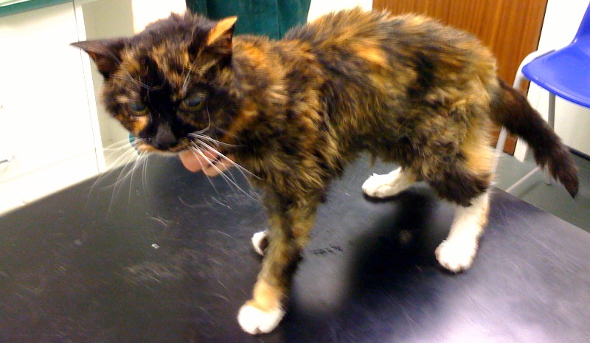
Golden Retrievers can be at risk of developing Hypothyroidism
Whilst little has been written on the effects of canine hypothyroidism on behaviour, there is increasing evidence of behaviour change in dogs suffering from an under active thyroid gland. Why a change in behaviour should occur is unclear, although, anything affecting the endocrine system will affect the whole body. It is thought that as thyroid hormones regulate cortisol clearance, when thyroid hormone levels are reduced, there are constantly high levels of cortisol circulating which can result in an animal being in a permanent state of stress.
Common changes in behaviour include dog to dog aggression, dog to human aggression, territorial aggression, irritability, mood swings, general fearfulness, separation anxiety, noise phobias, general anxiety, shyness, hyperactivity, compulsive behaviours and low concentration span. In fact all of the unwanted behaviours which people call me in to assist them with. Suspicion should arise when the happy family pet’s behaviour changes suddenly for no apparent reason.
There are a number of reasons why dogs develop hypothyroidism, the most common being Autoimmune Thyroiditis which accounts for 80% of cases. It is a familial, heritable condition and therefore affected dogs should not be used for breeding.
Whilst a number of breeds have a predisposition for Hypothyroidism, such as the Golden Retriever, any dog can suffer from this condition.
It was originally thought that Hypothyroidism was a disease of middle age but we are now seeing it in younger dogs. This could be attributable to other factors that may compromise the immune system such as poor diet or stress.
Canine hypothyroidism is difficult to diagnose as the symptoms are so wide ranging that they could also be symptoms of many other diseases. The classical signs are only evident after 70% of the thyroid has been destroyed but other clinical and behavioural changes can present during the early stages. The popular T4 test is not sufficient alone to diagnose hypothyroidism in dogs, as the baseline thyroid profile differs according to the age and breed of the dog. A complete baseline thyroid typically includes T4, total T3, free T4, Free T3, T3AA and T4AA.
If a dog suddenly developes any of the changes in behaviour listed above, think thyroid profile, if only to eliminate this condition as a possible cause.
Interestingly, cats are more likely to suffer with an overactive thyroid gland, and hyperthyroidism is a common disorder of older cats. It is caused by an increase in production of thyroid hormones from the thyroid glands, which are situated in the neck. Clinical signs associated with hyperthyroidism can be quite dramatic and cats can become seriously ill with this condition. However, in most cases hyperthyroidism is treatable and most cats will make a complete recovery.

